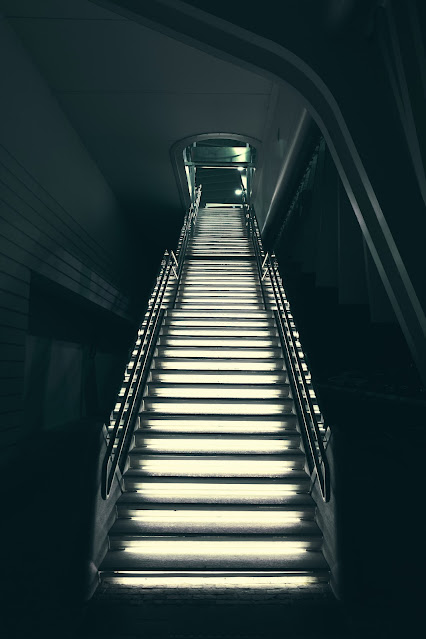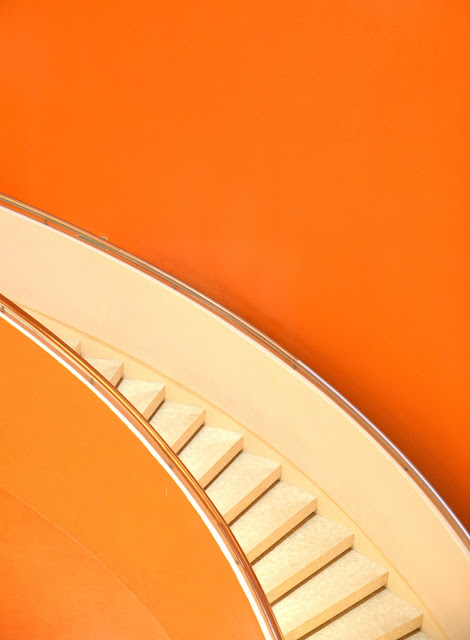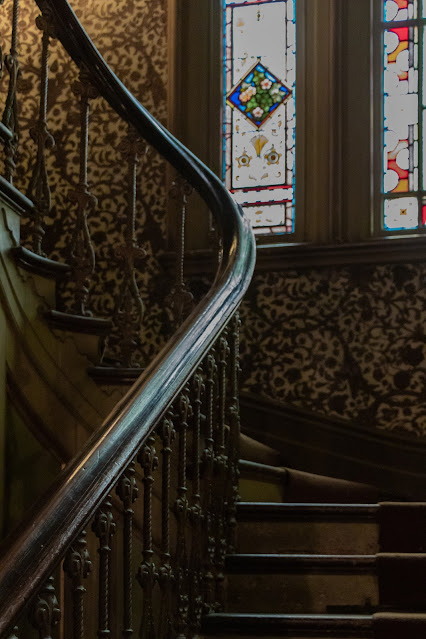Are you thinking about installing a stair lift in your home to gain back that independence? I know as a disabled person myself it seems like a big step (excuse the pun !). And I know while I think I am too young for mobility aids (I am 54) when I use them I realise how much they help with my pain and exhaustion. On bad days even a few stairs feel like Mount Everest.But maybe you have some doubts about investing in a stair lift. Well this guide will debunk the common misconceptions about Stairlifts and uncover the real facts and figures.
Myth 1: Stair Lifts Block the Entire Staircase
Misconceptions about installing a stairlift often lead people to believe that it will hinder others' ability to walk up the stairs. However, this is typically not the case.
Fact: Most stairlifts come equipped with foldable armrests, seats, and footrests, ensuring that they are out of the way when not in use. This allows ample space for others to use the staircase. Additionally, certain models even feature swivelling seats, enabling safe entry and exit at the top landing without the need to step on the stairs.
Furthermore, some curved stairlifts have a parking option. This allows the rail to be extended and wrapped around a bannister or corner, freeing up the stairs for unrestricted access when the chair is parked.
Myth 2: Stairlifts are run solely on Household electricity
People often think that home stairlifts solely run on household electricity, and even that they go out during power outages but this is false.
Fact: Contrary to common misconception, most stair lifts are not hardwired into your home but rather operate on battery power. By utilising a DC battery system, these lifts can easily be recharged by simply plugging them into your wall. They store a sufficient amount of power in their batteries, enabling them to continue functioning during a power outage and allowing for smooth movement throughout the staircase. The capacity of these batteries varies depending on the type of stairs you have (straight vs. curved) and length of your staircase, ensuring multiple trips can be made without the need for recharging.
Myth 3: Stair lifts are only for “elderly” people and restricted to Seniors
While it is true that there are seniors with limited mobility who benefit from stair lifts, it is important to note that not all stairlift users are seniors.
Fact: A stairlift can prove to be highly beneficial for individuals of all ages. For example, who have encountered significant injuries, suffer from mobility impairments, balance issues, and chronic pain. In the case of injuries, opting for a rental stairlift can serve as an ideal solution for those needing temporary assistance with their stairs. It is important to emphasise that there is no specific age, situation, or circumstance that dictates the necessity of purchasing a stairlift; the decision should be based on individual needs and requirements.
Myth 4: I’m too big for a stair lift and it won’t support my weight
People often think that generic stairlifts brands like handicare, acorn brooks etc, can't handle larger weights, however this is untrue. Some are even designed for larger people, and are very safe.
Fact: There are stair lifts available that accommodate individuals weighing up to 400 pounds. For those who are taller, it is advisable to measure the required distance. It’s important to note that the weight capacity of stair lifts will vary depending on the brand and model. However, most modern stair lifts are typically rated for a minimum of 300 pounds, with some models capable of supporting up to 400 pounds or even more. To ensure optimal comfort, it is recommended to test ride many different chairs, plus, it's always advisable to consult with a stair lift expert who can assist you in determining which stairlifts will best meet your needs.
Myth 5: Stair lifts are expensive and unaffordable
Like many things, it is about the alternatives. A straight or curved stair lift could cost £3000+ but it doesn't have to! Plus when compared to moving to a home on one level, a stairlift is often much less expensive.
Fact: Is the cost of stair lifts justified when considering the potential benefits? While it is true that stair lifts require an initial investment, they can greatly reduce the risk of falls and the need for costly hospital stays and recovery services. The value of maintaining your independence and mobility at home is priceless.
When comparing the cost of stair lifts to alternative options, it becomes evident that they are often the most affordable solution for achieving accessibility in your own home. Remodelling or adding an addition to your home, as well as considering a senior living facility, may seem like viable alternatives. However, if the primary concern is safely navigating the stairs, a stair lift purchase is a worthwhile investment that grants you the freedom to move around your entire home.
Myth 6: Stair Lifts have to be Attached to the Wall
People often over plan the installation of their stairlift, thinking they need strong wall support and that it’ll be attached to the wall itself, but again, this is untrue.
Fact: All stairlifts are mounted onto the stairs and actually mounted to the treads of the stairs, so installing a stair lift will not damage your walls! Plus the straight stair lift itself can usually be installed in less than two hours. A curved stair lift is slightly more complex but still takes no more than 1 day in most cases. Even If your stairs are carpeted, it’s unlikely that you’ll be able to see the screw holes after the stairlift is removed, making a stairlift a low maintenance installation.
Myth 7: A stair lift won’t fit my stairs or I have curved stairs
The main misconception with Stair Lifts is that they can only be installed on straight staircases.
Fact: Stair lifts are highly versatile and can be easily installed on any staircase, regardless of its size or shape. Many companies offer custom-made stair lifts that are specifically designed to match the specifications of your staircase. Additionally, there are specialised stairlift models available for staircases with curves, turns, and intermediate landings. Whether your stairs are long or short, straight or curved, narrow or wide, there is a stair lift solution to perfectly suit your needs.
Stairways can generally be categorised into two types: straight and curved. If your stairs consist of a single straight flight, a straight stair lift is ideal. However, if your stairs feature any other configuration, such as curves or an intermediate landing, a curved stair lift is what you need to look for.
Myth 8: A stair lift means giving up your independence
Some people may think that buying a stairlift means giving up your independence, but this is very untrue.
Fact: Installing a stair lift does not diminish independence for individuals who can no longer walk or crawl the stairs. In fact, it restores independence by offering a safer and more convenient way of moving between the levels of your home. When mobility becomes limited and there is a risk of serious injury, stairs are no longer a safe option.
Thankfully, there are numerous alternative exercises available that are much safer, such as walking on designated paths in local parks or utilising treadmills at nearby gyms. By incorporating a stair lift into your home, you can maintain independence and safely access all areas of your home.
The importance of home mobility and independence
In conclusion, I hope debunking the top 8 myths about stairlifts, curved stairlifts and home mobility has shed light on the crucial role these devices play in enhancing the lives of individuals with limited mobility. We have emphasised the importance of stairlifts in promoting independence and improving the overall quality of life for those who struggle with stairs.
Recognising the significance of home mobility solutions not only ensures a safe and comfortable living environment but also empowers individuals to maintain their autonomy and freedom within their own homes. I know from experience that once you accept mobility assistance it can give you back so much independence. I'd rather be in a wheelchair and watch my children enjoy a theme park rather than limp along trying to hide my pain and exhaustion and I'd rather use a stairlift than sleep downstairs on a sofa bed on the days I can't face scaling Everest.




